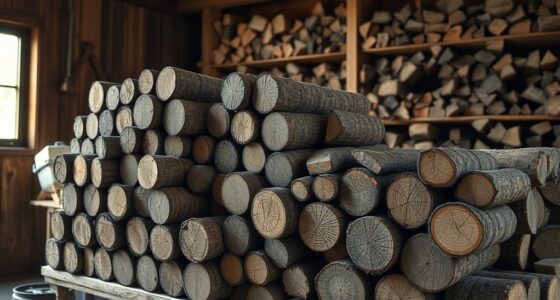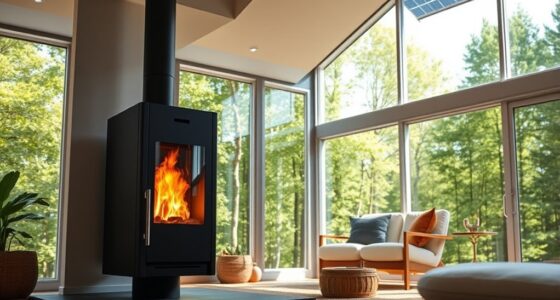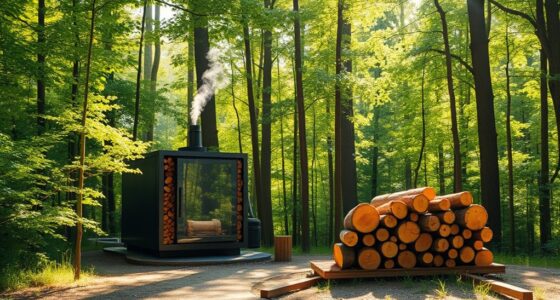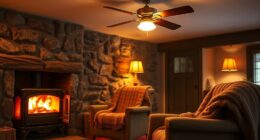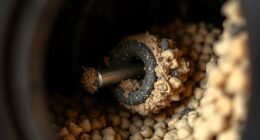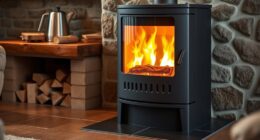The Seebeck effect allows your stove’s heat to generate electricity directly through a thermoelectric module. When one side is hot and the other cold, charge carriers move, creating a voltage. This electricity powers a small motor that turns the fan blades, circulating warm air without needing batteries or external power. Curious how this efficient, heat-powered system works? Continue exploring to discover the details behind this innovative technology.
Key Takeaways
- The Seebeck effect generates voltage when a temperature difference exists across a thermoelectric material.
- Heat from the stove creates a temperature gradient that drives charge carrier movement.
- The resulting electrical voltage powers a small motor to spin the fan blades.
- This process converts heat energy directly into mechanical energy without external power.
- Material quality influences the efficiency and effectiveness of heat-to-electricity conversion in stove fans.
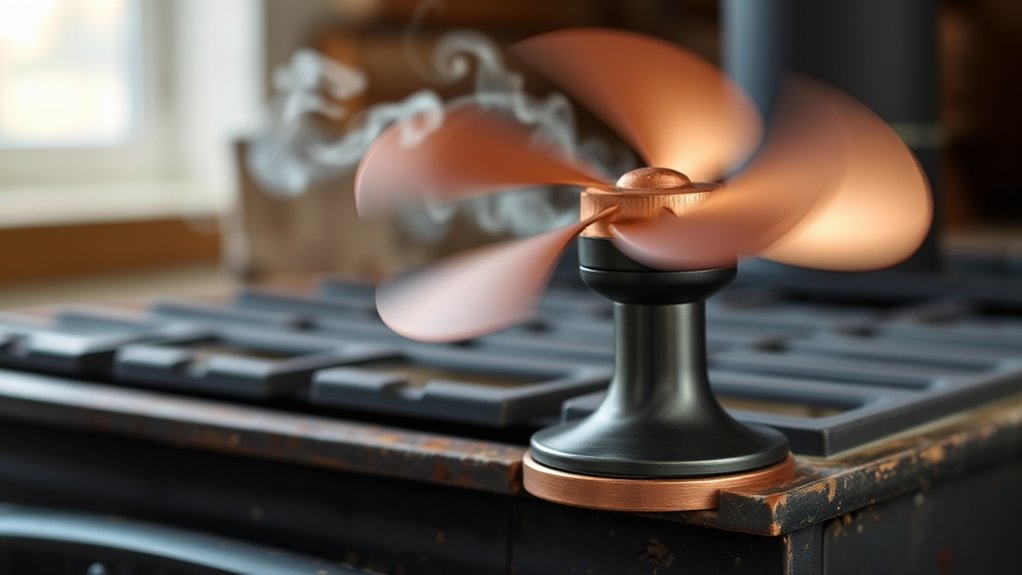
The Seebeck effect occurs when a temperature gradient exists across a thermoelectric material—usually a special alloy or ceramic. When one side of the material gets hot and the other remains cool, charge carriers within the material—electrons or holes—move from the hot side to the cold side. This movement creates an electric voltage, which can be used to generate electricity. In the case of stove fans, the heat from your stove creates this temperature difference across the thermoelectric module. As a result, the module produces a small but sufficient amount of electricity to power a small motor, which then spins the fan blades. This process turns heat directly into useful mechanical energy, making the fan operate smoothly without any external electrical input. The efficiency of thermoelectric devices depends heavily on the material properties, which influence their ability to convert heat into electricity effectively.
Frequently Asked Questions
How Long Do Heat-Powered Stove Fans Typically Last?
Heat-powered stove fans typically last between 5 to 10 years, depending on usage and maintenance. You can maximize durability lifespan by keeping the fan clean and avoiding excessive heat. When it reaches the end of its life, replacement options are straightforward—most models are affordable and easy to install. Regular care guarantees you get the most out of your fan, providing efficient heat circulation for years to come.
Are There Safety Concerns Using Heat-Powered Stove Fans?
Imagine you’re in the year 2024, and safety is your top priority. Using a heat-powered stove fan generally isn’t risky if you follow proper procedures. However, you should be mindful of electrical safety and fire hazards. Keep the fan clean and away from flammable materials, and make certain it’s properly attached. When used correctly, these fans are safe and can efficiently circulate heat without posing significant dangers.
Can Stove Fans Work With Any Type of Stove?
Stove fans work best with wood or pellet stoves that generate consistent heat, but they may not be compatible with all stove types. To maximize cooking efficiency, guarantee the fan material is heat-resistant and durable. If your stove’s surface reaches the right temperature range, the fan will operate efficiently, helping distribute heat evenly. However, avoid using them on stoves with irregular or extremely high temperatures, which could damage the fan.
How Noisy Are Heat-Powered Stove Fans During Operation?
You might be surprised how quiet heat-powered stove fans are during operation. Typically, their noise levels are minimal, producing gentle fan sounds that blend into your cozy environment. The fan sound characteristics usually include a soft whir or hum, which isn’t disruptive. While some models may be slightly louder, most operate silently enough to keep your focus on the warmth, creating a peaceful, comfortable atmosphere.
Do Heat-Powered Stove Fans Require Any Maintenance?
You don’t need to do much maintenance on heat-powered stove fans. They’re built for durability, so they usually last a long time without fuss. To keep your cooking efficiency high, just keep the fan blades clean and free of dust or debris. Periodic checks ensure the fan operates smoothly, helping it perform well and prolonging its lifespan. Regular cleaning is all you need for maximum performance.
Conclusion
Now that you know how the Seebeck effect powers stove fans, imagine this: a tiny temperature difference of just 10°C can generate enough electricity to turn a fan and circulate warm air. It’s like turning heat into motion with a simple, silent miracle. This small yet powerful technology can move hundreds of cubic feet of air per hour, making your home cozier and more energy-efficient without extra power sources. Isn’t that a fascinating way heat works?




